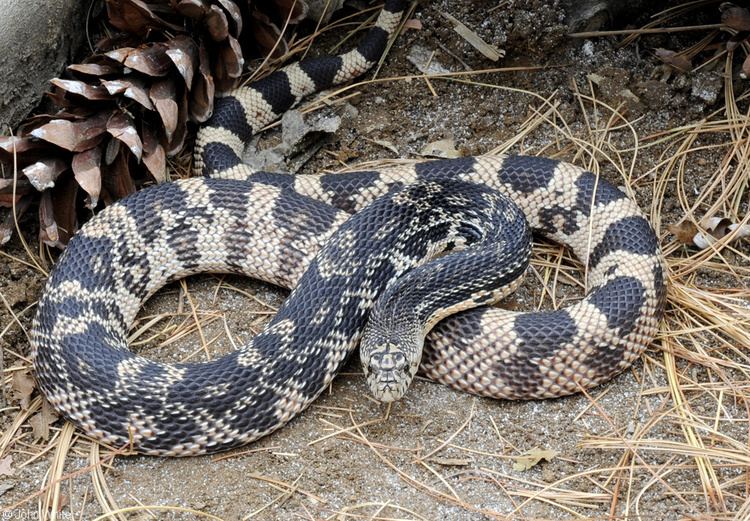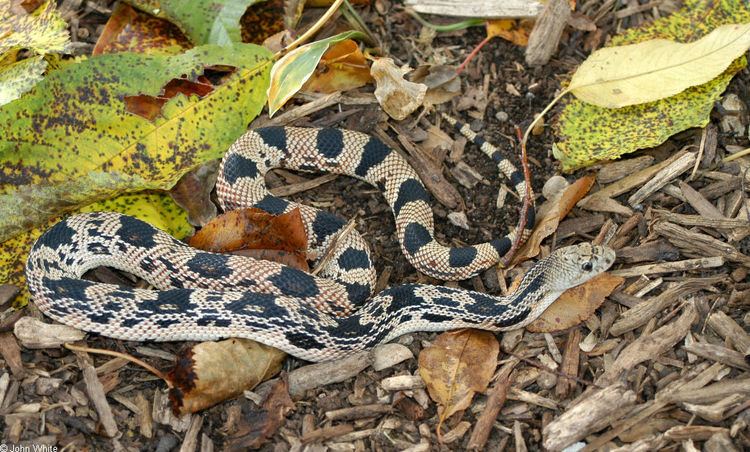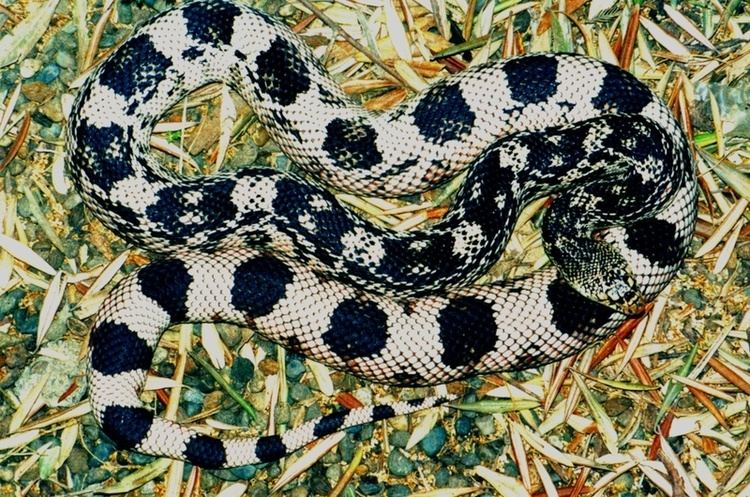Subphylum Vertebrata Suborder Serpentes Rank Species | Phylum Chordata Higher classification Pituophis | |
 | ||
Similar Pituophis, Snake, Reptile, Bullsnake, Pituophis catenifer | ||
Pituophis melanoleucus
Pituophis melanoleucus, commonly known as the pine snake, is a nonvenomous species of colubrid endemic to the southeastern United States. Three subspecies are currently recognized.
Contents
- Pituophis melanoleucus
- La chronique reptiles pituophis melanoleucus melanoleucus partie 2
- Taxonomy and etymology
- Description
- Distribution and habitat
- Ecology
- Reproduction
- Conservation status
- References

La chronique reptiles pituophis melanoleucus melanoleucus partie 2
Taxonomy and etymology

Three subspecies are currently recognized: the nominate subspecies P. m. melanoleucus (Daudin, 1803), the northern pine snake; P. m. lodingi (Blanchard, 1924), the black pine snake; and P. m. mugitus (Barbour, 1921), the Florida pine snake.

The subspecific name lodingi is in honor of Danish-born amateur herpetologist Peder Henry Löding (1869-1942) who lived in Alabama.

The species has a variety of common names, including: pine snake, pinesnake, common pine snake, bull snake, black and white snake, carpet snake, chicken snake, common bull snake, eastern bull snake, eastern pine snake, horn(ed) snake, New Jersey pine snake, North American pine snake, northern pine snake, pilot snake, and white gopher snake.
Description

Adults are large, growing to 48–100 inches (120–250 cm) in length, and are powerfully built. The head is small and somewhat pointed with an enlarged rostral scale that extends upward between the internasal scales. There are usually 4 prefrontal scales. At midbody there are 27-37 rows of keeled dorsal scales. The anal plate is single. The color pattern consists of a light ground color overlaid with black, brown or reddish-brown blotches.
Distribution and habitat

The species is found in the United States in Alabama, Florida, Georgia, Kentucky, Louisiana, Mississippi, New Jersey, North Carolina, South Carolina, Tennessee, Delaware and Virginia. The nominate subspecies occurs in southern New Jersey, southern North Carolina west through South Carolina to northern Georgia, eastern Tennessee, southeastern Kentucky and south into Alabama. P. m. lodingi occurs from southwestern Alabama to eastern Louisiana, overlapping with P. m. mugitus from southern South Carolina to Georgia and southern Florida.
The pine snake inhabits pine flatwoods, sandy pine-oak woodlands, prairies, cultivated field, open brushland, rocky desert, and chaparral. It occurs from sea level to an elevation of 9,000 feet (2,700 m). The pine snake requires well-drained sandy soils with little vegetation for use as nesting and hibernation sites.
Ecology
The pine snake preys on rats, mice, moles, other small mammals, and eggs. It often enters rodent burrows in search of a meal. In these cases, multiple kills are frequent with the snake pressing the mice against the walls of the burrow. The snake will remain underground in cold weather or during the heat of summer days.
When disturbed, it will often hiss loudly, sometimes flattening its head, vibrate its tail and eventually strike at an intruder. To make the rattling sound the snake forces air out of its lungs, vibrating the epiglottis.
Reproduction
After mating has taken place in spring, clutches of 3-24 eggs are laid in June–August. The eggs are deposited in sandy burrows or under large rocks or logs and hatch after 64–79 days of incubation. The eggs are adherent and quite large, up to 66 millimetres (2.6 in) long by 45 millimetres (1.8 in) wide. Hatchlings measure 33–45 centimetres (13–18 in).
Conservation status
This pine snake is classified as Least Concern on the IUCN Red List due to its wide distribution and large number of sub-populations; while the total populations appears to be declining, this is likely happening at a slow rate. However, it is thought that the species is impacted by continued habitat degradation and destruction. It is present in a variety of protected areas.
